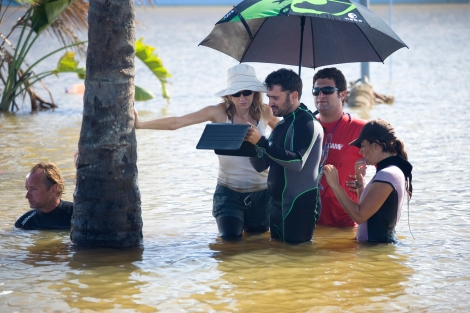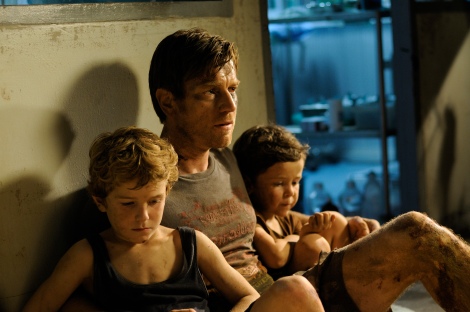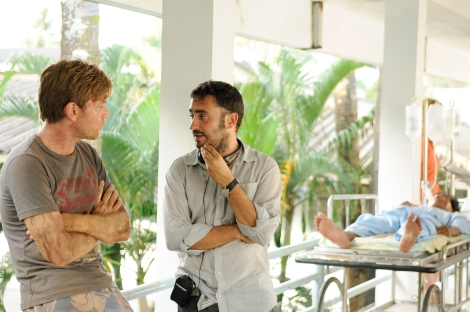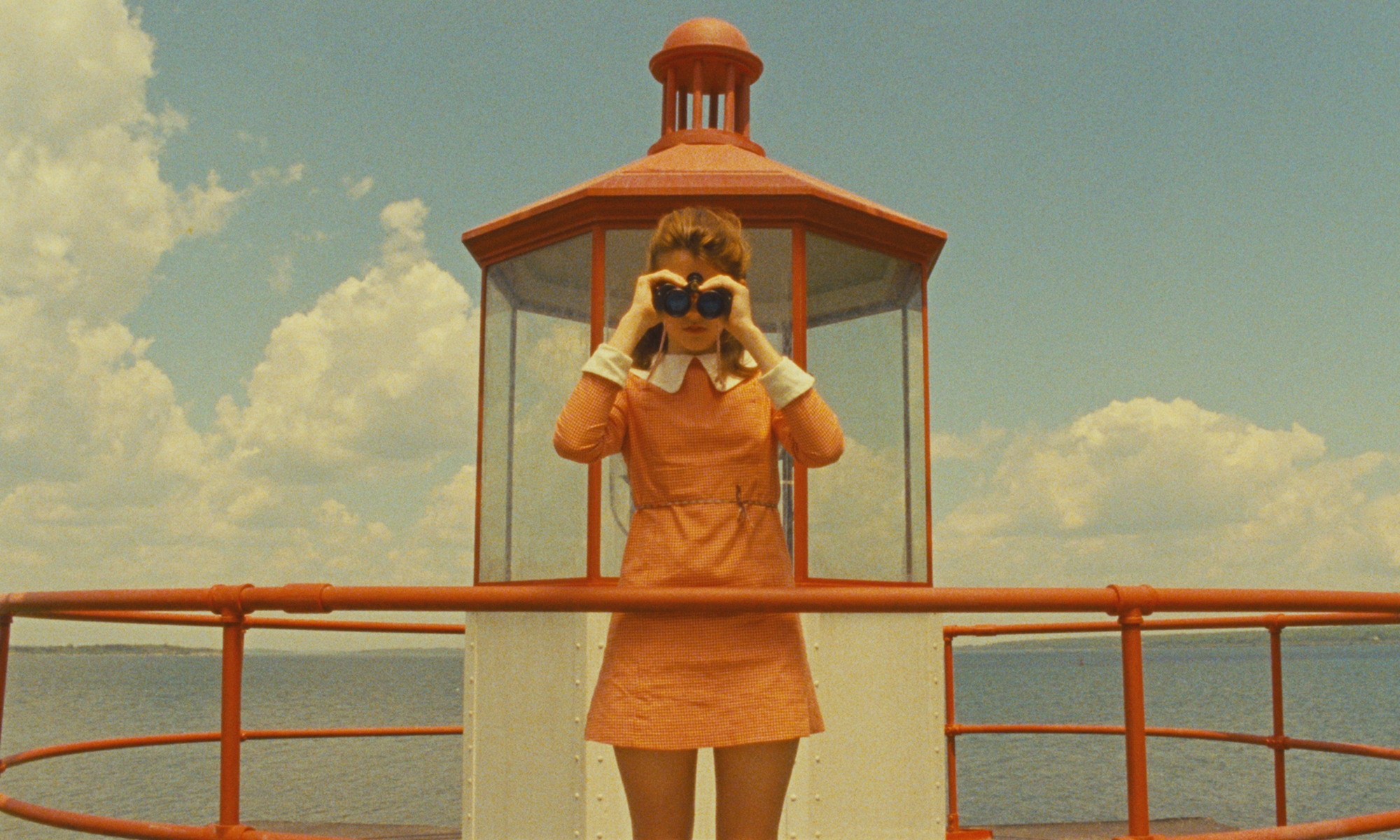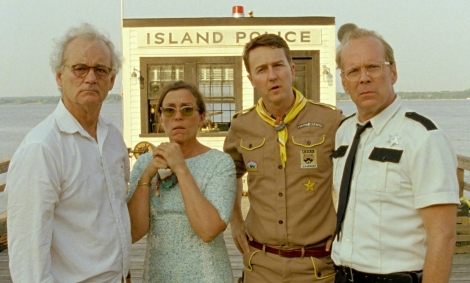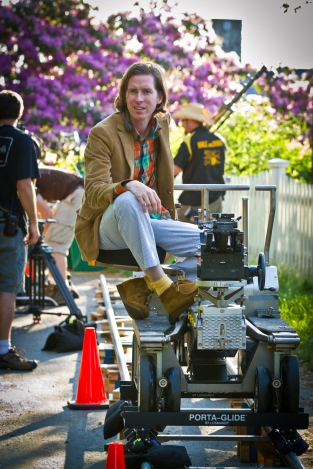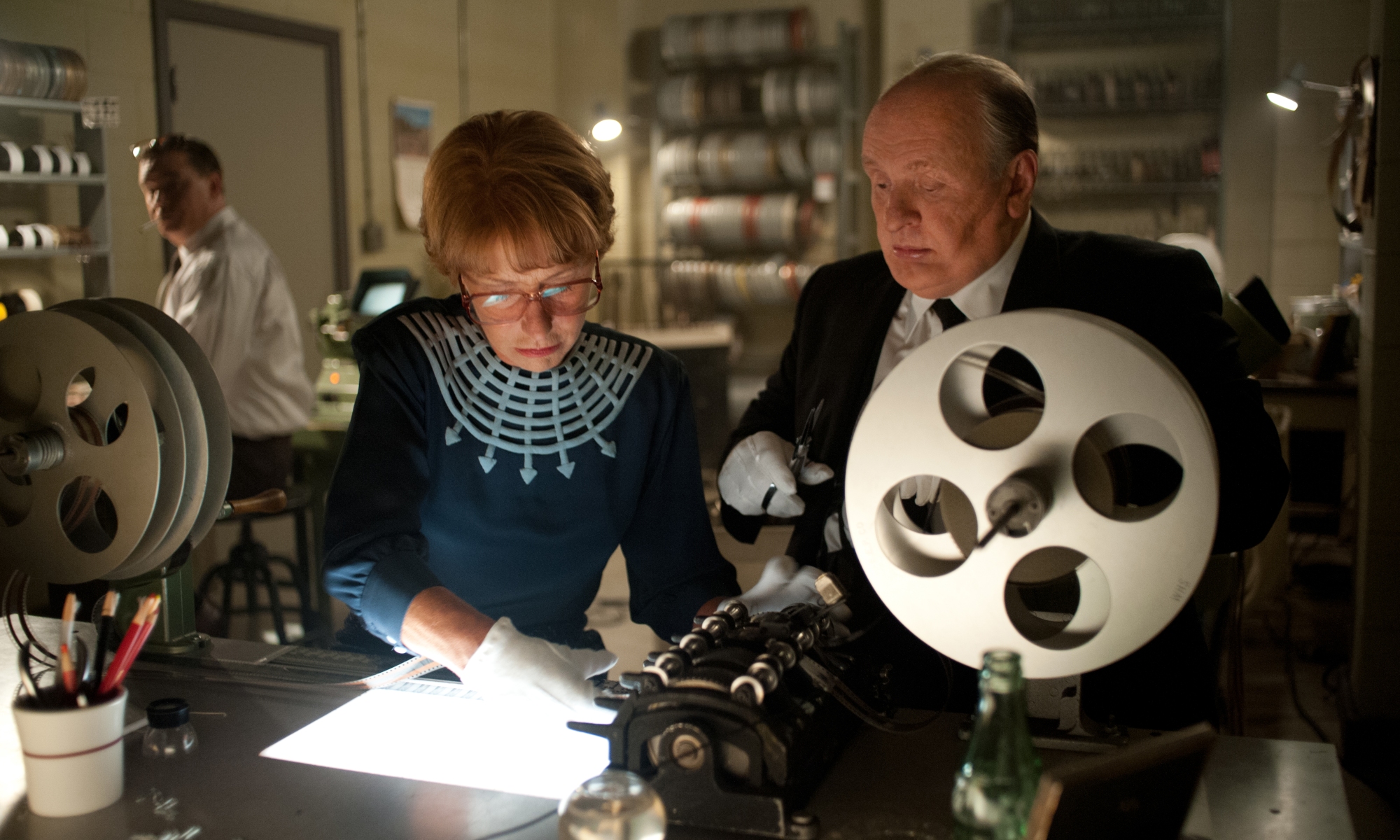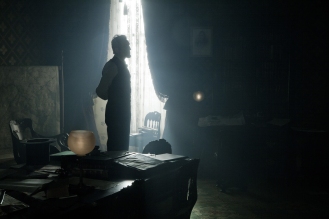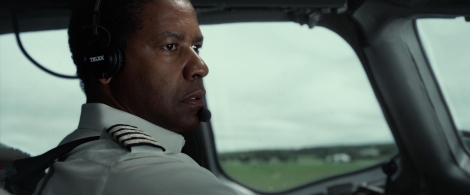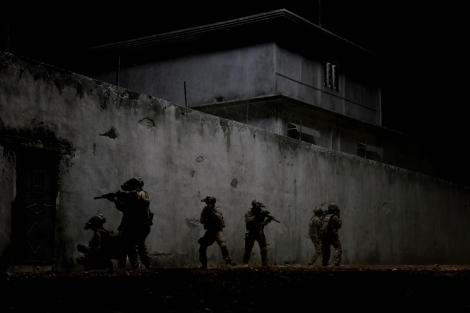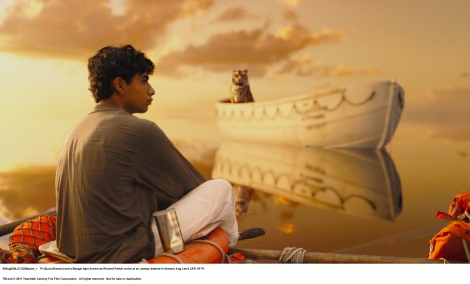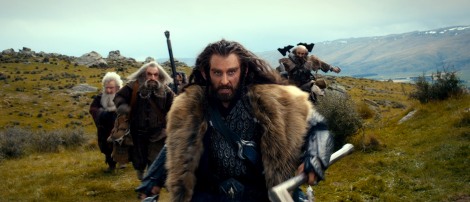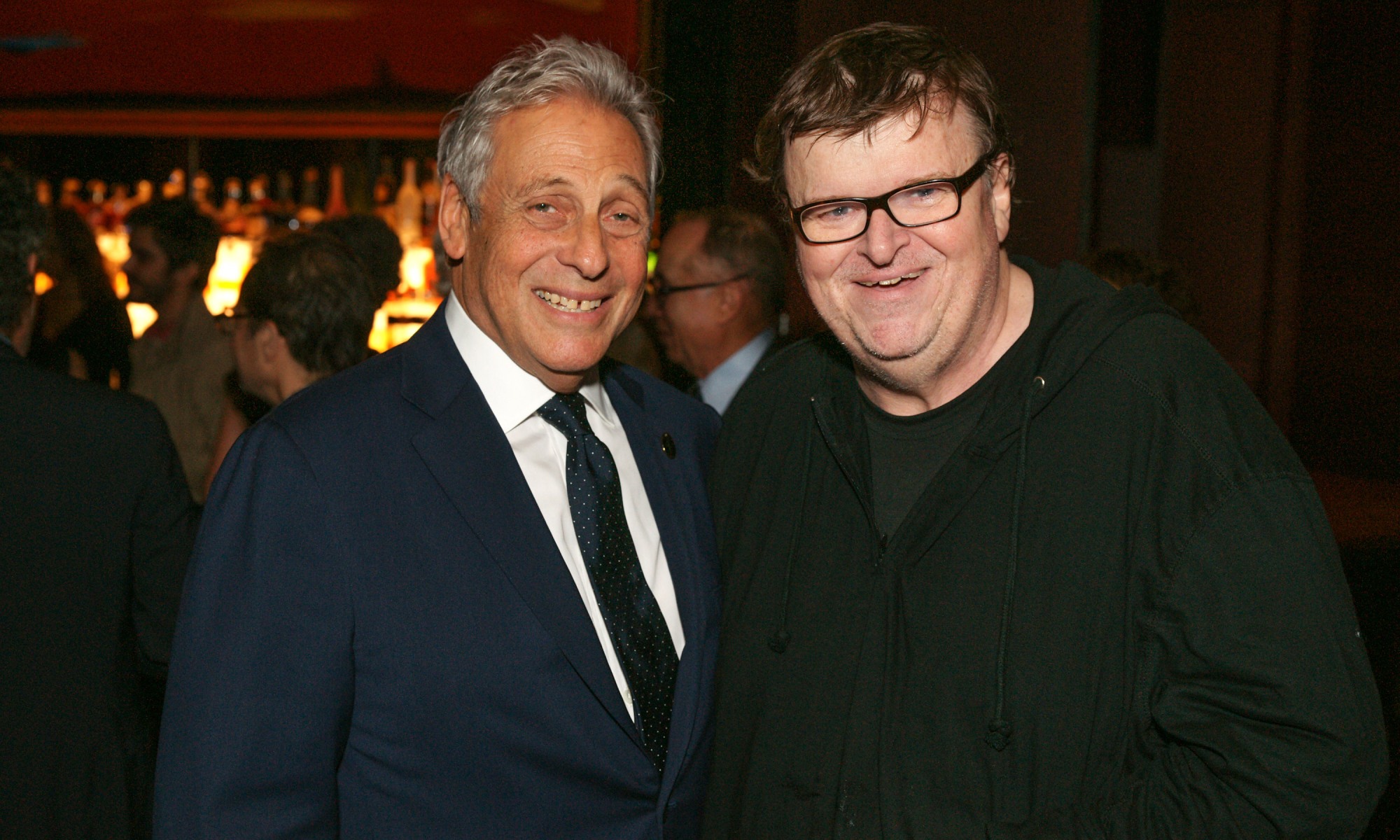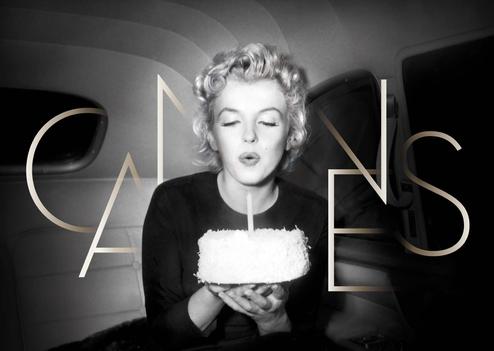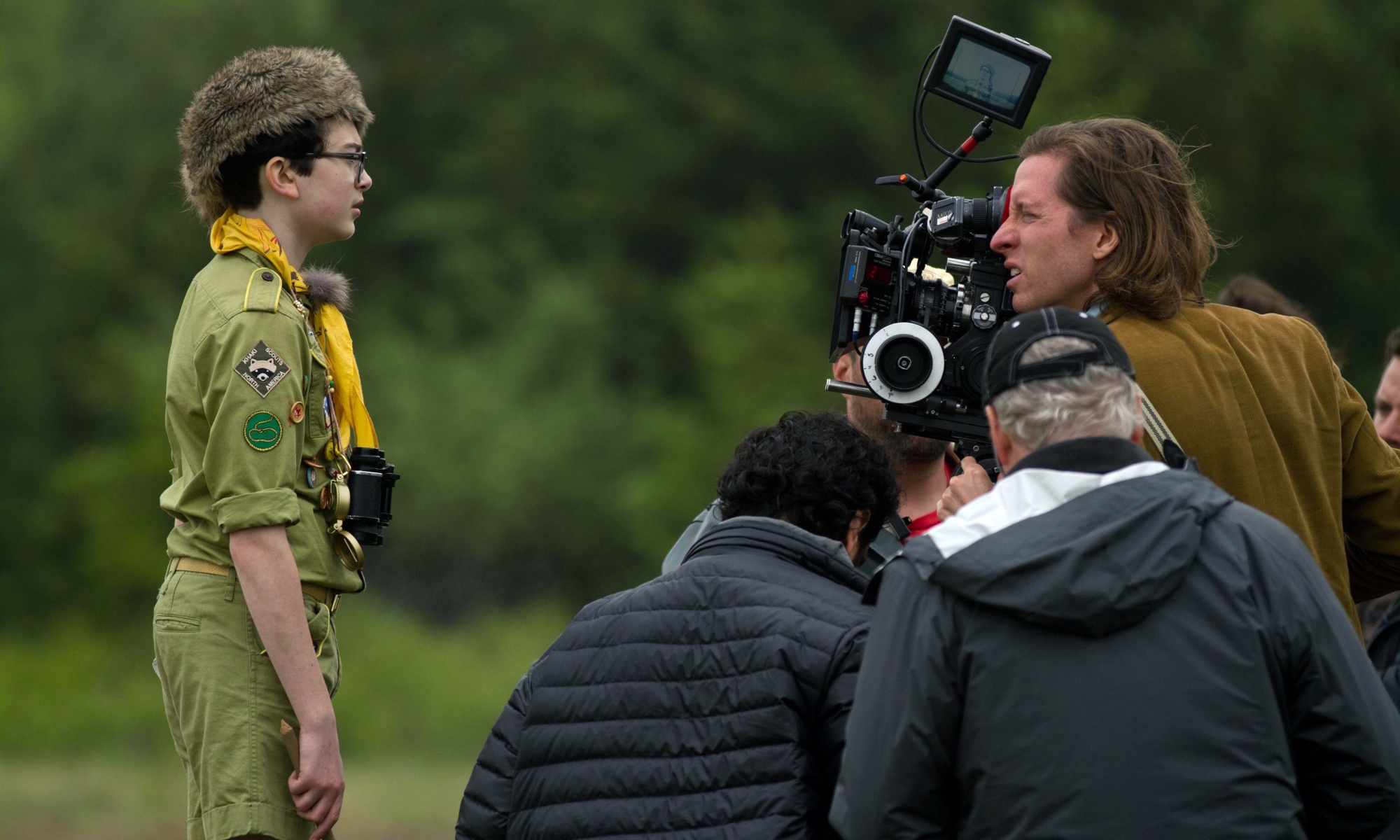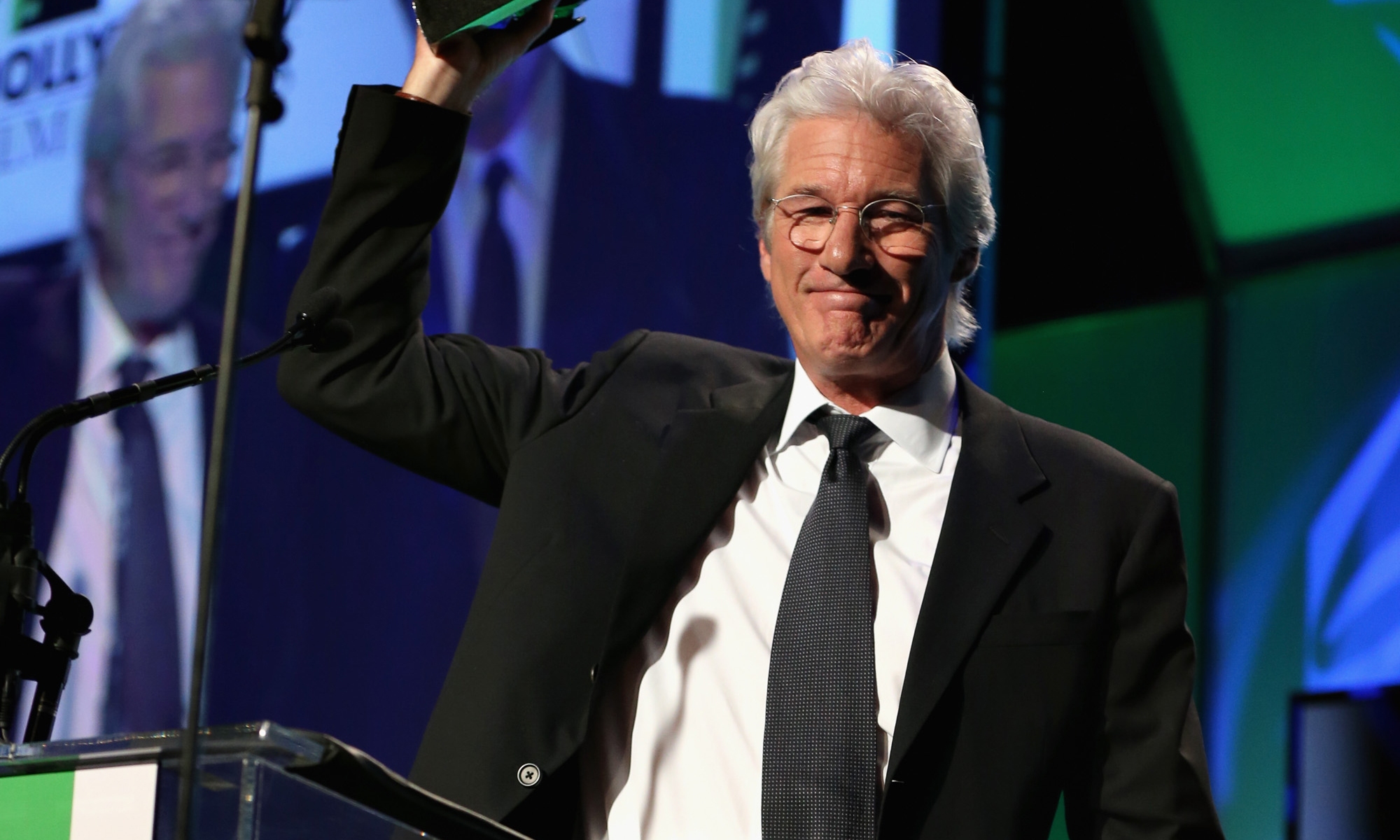Diane Haithman is an AwardsLine contributor. This story appeared in the Oct. 31 issue of AwardsLine.
It’s not that independent filmmaker Benh Zeitlin, 30, and his team at Court 13 Productions had nothing to lose when they set out to produce Beasts of the Southern Wild, Zeitlin’s first feature film. But with a miniscule budget somewhere between $1.5 million and $1.8 million, they could afford to take a few more risks than a Hollywood producer hoping to turn a profit on a $200 million action film.
On the risky side: Casting two Louisiana locals with zero acting experience in the lead roles—one a 6-year-old—and dressing up a crew of little pot-bellied pigs to represent a herd of giant prehistoric Aurochs. These boar-like beasts bedevil the imagination of Hushpuppy (Quvenzhané Wallis), an independent little girl in white rubber boots who defies nature to try to save her ailing father (portrayed by Dwight Henry, a baker and restaurateur in real life) and her bayou home during a raging Katrina-like storm. (“They are about the cutest thing in the world when you see them live,” Zeitlin says of the little porkers).
 And as Oscar season approaches, the odds makers are already betting that the modestly-budgeted film—which has earned just over $11 million since its theatrical release in June—could gain voters’ attention. However, the decision to cast nonunion actors has proved problematic for one stop on the awards trail: It has been ruled ineligible for the Screen Actors Guild Awards because is does not adhere to the terms of SAG-AFTRA’s Low Budget Feature Agreement, which requires the use of professional actors. Nevertheless, the buzz still seems to be with Beasts.
And as Oscar season approaches, the odds makers are already betting that the modestly-budgeted film—which has earned just over $11 million since its theatrical release in June—could gain voters’ attention. However, the decision to cast nonunion actors has proved problematic for one stop on the awards trail: It has been ruled ineligible for the Screen Actors Guild Awards because is does not adhere to the terms of SAG-AFTRA’s Low Budget Feature Agreement, which requires the use of professional actors. Nevertheless, the buzz still seems to be with Beasts.
Inspired by Zeitlin’s short Glory of the Sea and based on Lucy Alibar’s play Juicy and Delicious, the film premiered at the 2012 Sundance Film Festival and won the festival’s Grand Jury Prize. At Sundance, Fox Searchlight Pictures snapped up the film for distribution. One of the film’s executive producers, Michael Raisler, would not name names when asked who competed for the distribution rights (Harvey Weinstein, anyone?). But he confirmed that “pretty much everybody at some point” tried to make a deal at Sundance to distribute Beasts.
Beasts also made a well-received international debut at this year’s Cannes Film Festival, where it took the Camera d’Or award, and has won stellar reviews nationwide. All this is heady stuff for Zeitlin, who has a hard time thinking about his career from a commercial perspective. “Making films has always been like a burst of energy. It’s never been something that is kind of calculated,” he says. “I never sat down to think, ‘Well, (here’s what I should do) to make it in the directing game.’ It’s just a story that takes hold of you at a certain time, and you follow that impulse.”
In this case, the impulse came from his longtime friend Alibar, whose Juicy and Delicious tells the story of a 10-year-old Southern boy with a dying father, who believes his father’s death will coincide with the end of the world. The boy in the play is also pursued by the Aurochs. Alibar, who attended playwright’s camp with Zeitlin at age 13, based the play on her own experience during her own father’s illness, but chose a boy character in order to be able to distance herself from the story while writing it.
Alibar, who cowrote the script with Zeitlin (her first screenwriting effort), was a struggling young adult, not a kid, when her father developed heart problems, but her reaction was not unlike that of an angry child. “I was in New York, working two bartending jobs and a waitressing job,” says Florida-panhandle native Alibar, adding that her father has since recovered. “I’m from the Southern Baptist tradition, and you’re not supposed to feel anger when you lose somebody. When somebody dies, you are supposed to rejoice that they are going to God. I wasn’t feeling any of that. I was feeling these really angry, ugly feelings. So I wrote Hushpuppy as a boy so I could really write about what I was feeling without it being so confessional.”
 During the audition process, Zeitlin and Alibar were looking to cast a girl, but remained open to the possibility that the right Hushpuppy might be of any race, either sex, and older or younger than the Hushpuppy of the play. “I guess it’s like having a baby, you don’t get to choose,” Alibar jokes. But it was Wallis, age 5 at the time of the audition, who won their hearts, despite their reservations about relying on someone so young to carry the movie.
During the audition process, Zeitlin and Alibar were looking to cast a girl, but remained open to the possibility that the right Hushpuppy might be of any race, either sex, and older or younger than the Hushpuppy of the play. “I guess it’s like having a baby, you don’t get to choose,” Alibar jokes. But it was Wallis, age 5 at the time of the audition, who won their hearts, despite their reservations about relying on someone so young to carry the movie.
Alibar’s story was thrown into the blender with Zeitlin’s concept for Glory of the Sea, shot in Louisiana from 2006-08. A trailer for the short film describes it as “eleven strangers who set sail to find their loved ones at the bottom of the sea” in an atmosphere very much like the Bathtub, the name for the fictional bayou area depicted in Beasts. “The idea was to make a film in which holdouts and survivors were the heroes,” Zeitlin says. “To make a film that celebrates the kind of resilient characters that were refusing to be pushed off their land.” Along with writing and directing, Zeitlin also cowrote the music with Dan Romer.
Producing the short film led Zeitlin to move to New Orleans permanently and make the city the home of Court 13. “It was never my intention that I was going to stay, but at that moment in 2008 that it was dawning on me that I was going to stay, the early idea for Beasts began to coalesce,” Zeitlin explains. Like Alibar, an unfortunate life experience further refined his focus.
“In the year that this was getting written, I had been in a car accident, and I had gone back to New York to recover (wondering whether) I was going to walk again and stuff,” he says. “And I remember I was home when (hurricanes) Gustav and Ike hit.
“I was watching the coverage and seeing this whole way in which people were being portrayed for staying, for riding out those storms,” Zeitlin continues. “This came out of wanting to tell a story from the perspective of the people that were staying, rather than how they were perceived. It wasn’t about Katrina as much as it was about the area, imagining what it’s going to be like to live under this constant threat of storms every couple of years.”
Zeitlin recovered from the accident and set about working to create Beasts. Gathering the financing required going to a lot of different sources, resulting in an extremely long list of producers. The film is a Cinereach and Court 13 Production in association with Journey Pictures. Cinereach, a young nonprofit foundation that provides filmmaking grants as well as producing and financing films, provided the bulk of the funding, supported by grants from Sundance and the San Francisco Film Institute, as well as various in-kind donations.
Zeitlin hopes Academy recognition for Beasts of the Southern Wild will lead to more films with low budgets and high aspirations. “There’s really no place for this type of film in the world right now,” he says. “Hopefully, it will have a ripple effect where it will allow regional films to get made, and also give us the leverage we need to continue doing this kind of work.”
Concludes Zeitlin, “If you make a film for $150 million, it can’t fail, so it has to be safe. E.T. was made for $10 million. When you look back at even Hollywood movies that were really risky, the films that are true classics and stand the test of time, almost all of them are made for a fraction of these behemoth blockbusters, and they are more daring in their storytelling.”




